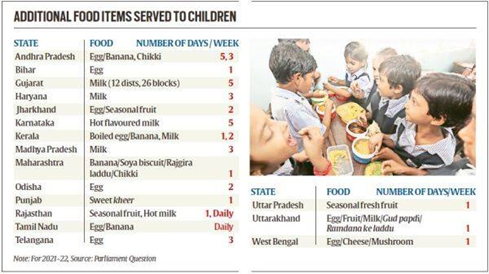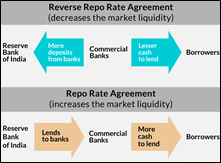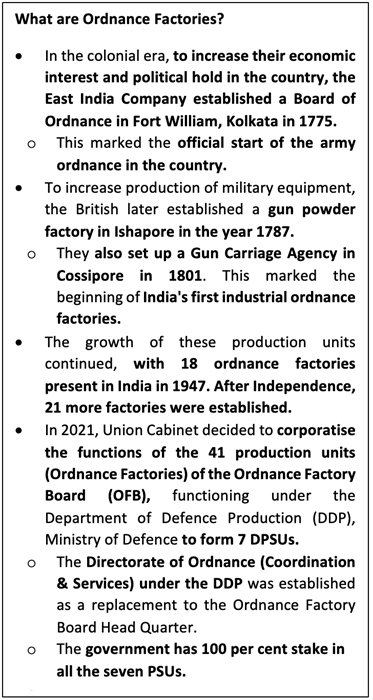Thursday, 14th April 2022
India to miss Solar Power Target 2022
In News
India is set to miss its target of installing 100 GW of solar power by the end of 2022, per a new report.
India’s Solar Energy Targets
- National Solar Mission (NSM) was launched on 11th January, 2010 by the Central Govt. with active participation from States to promote ecological sustainable growth while addressing India’s energy security challenges.
- It will also constitute a major contribution by India to the global effort to meet the challenges of climate change.
- The Mission’s objective is to establish India as a global leader in solar energy by creating the policy conditions for solar technology diffusion across the country as quickly as possible.
- The Mission targets installing 100 GW grid-connected solar power plants by the year 2022.
- This is in line with India’s Intended Nationally Determined Contributions (INDCs) target to achieve about 40 percent cumulative electric power installed capacity from non-fossil fuel-based energy resources and to reduce the emission intensity of its GDP by 33 to 35 percent from 2005 level by 2030.
- At COP26 in Glasgow, India announced that India’s non-fossil energy capacity will reach 500 GW by 2030, meeting 50% of the country’s energy requirements by then.
- To achieve the targets schemes such as Solar Park Scheme, VGF Schemes, CPSU Scheme, Defence Scheme, Canal bank & Canal top Scheme, Bundling Scheme, Grid Connected Solar Rooftop Scheme etc. have been launched.

Findings of the Report
- A new report by the Institute for Energy Economics and Financial Analysis (IEEFA) and JMK Research said that India will miss the target to install 100 gigawatts of solar power by 2022 by 27%.
- India is also likely to miss its solar energy target of 300 GW (gigawatt) for 2030 by around 86 GW.
- The report estimates that there will be a shortfall of 25 GW from the 40 GW rooftop solar target, and 1.8 GW from the 60 GW utility-scale solar target.
- This indicates the need for a concerted effort towards expanding rooftop solar installations.

Ways to overcome the challenges
- Utility-scale solar capacity addition is on track. India is set to achieve nearly 97% of its 60GW target. This makes it imperative to have a more concerted effort towards expanding rooftop solar.
- Short measures:
- Government may push aggressively for expediting solar capacity addition to achieve the 100GW target by 2022 by re-allocating some of the unmet rooftop target to utility-scale generation
- Long-term measures:
- Uniform policies to apply nationally for at least the next five years.
- Consistent regulations for net metering and banking facilities, which should apply nationally.
- Strictly enforcing renewable purchase obligations (RPO) of companies.
Conclusion: India has been the frontrunner in meeting its Solar Energy Targets and a leader in the sector at the global level. Green Grids Initiative — One Sun, One World, One Grid, an initiative by International Solar Alliance was launched by India at the world platform. Due to its unique geographical advantage of lying in the tropics and the need for providing electricity to its masses, it becomes all the more necessary for India to met its targets in light of its image as the torchbearer of the global movement in the Solar Energy Sector.

Sources:
Coal shortage
In News
India is expected to face more power cuts in near future
About the News
- Due to coal shortage and soaring demands, India is likely to face more power cuts this year as utilities' coal inventories are at the lowest pre-summer levels in at least nine years and electricity demand is expected to rise.
- Total power output is seen surging 15.2% during the year ended March 2023 with demand set to rise at the fastest pace in at least 38 years.
- India's power demand is expected to soar in summer, with weather officials forecasting maximum temperatures above normal in April in many northern and central regions.
- According to Ministry of power, the Coal India is targeting a 4.6% increase in supply to utilities to 565 million tonnes this financial year to avert a shortage.
- With coal accounting for nearly 75% of India's power output, power cuts could stifle industrial activity in Asia's third largest economy, just when economic activity was starting to recover after months of COVID-related lockdowns.
What are the major issues?
- Shortage of electricity: The shortage of electricity as a percentage of demand has shot up due to serious coal shortage.
- Limited stock: Coal inventories at power plants had an average stock of nine days at the beginning of this financial year starting April 1, the lowest since at least 2014. Federal guidelines recommend power plants to have at least 24 days of stock on average.
- Poor inventory: Utilities' coal inventory at lowest levels in at least 9 yrs and even after Coal India and the coal ministry kept asking power plants to stock up, the utilities kept reducing their inventories.
- Adverse impact on industries: Coal India' slashes supplies to non-power sector forcing industries to reduce output due to the power cuts and shortages.
- Supply crisis: A shortage of trains to deliver coal to power plants is exacerbating the supply crisis. The number of trains committed by the Indian Railways per day is 415, 8.4% lower than the 453 required by the utilities.
- Soaring power demand: unprecedented growth in power demand has been seen in FY23 which is likely to push coal-fired power generation up by 17.6%.
- Power generation alternatives: Higher power demand has forced India to cut coal supplies to the non-power sector, despite record production and supply by Coal India Ltd, which produces over 80% of India's coal.
- Production stress: The power demand growth forecast has pushed the Coal India production to record highs.
- Financial burden: The power ministry has asked utilities to increase coal imports for blending to 36 million tonnes, the highest in at least six years. The move is expected to add to the financial woes of debt-laden power distributors, as global coal prices are trading at steep premiums to average levels in 2021 due to the Russia-Ukraine crisis.
Sources:
Cardless Cash Withdrawal at ATMs
In News
The Reserve Bank of India (RBI) has recently proposed to make cardless cash withdrawal facility available at all ATMs across the country.
About the News
- The cardless cash withdrawal facility will be available at all ATMs, irrespective of banks, through the Unified Payment Interface (UPI) as against the present where this facility is limited only to a few banks.
- Current ways of cardless cash withdrawals at ATMs:
- Limited to few banks: Owing to the pandemic, a few banks such as ICICI Bank, Kotak Mahindra Bank, HDFC Bank and SBI, allow their users to withdraw cash from their ATMs without a card.
- Long-drawn process: However, it is a long-drawn process where the users have to install apps of their respective banks and first select the option of cardless cash withdrawal on the app, followed by adding beneficiary details and the withdrawal amount.
- After confirming the mobile number of a user, the bank will send an OTP and a nine-digit order ID to the beneficiary’s phone.
- Post that, the beneficiary would have to visit an ATM and key-in the OTP, order ID, amount for transaction and mobile number to get the cash.
- Cap on the cash: Cardless cash withdrawals have certain limits as well: such withdrawals start from Rs 100 per transaction and have an upper limit put in place by respective banks.
- For HDFC Bank users, such withdrawals are restricted to a maximum of Rs 10,000 each day and Rs 25,000 per month.
- Such withdrawals also come with a service fee of Rs 25 per transaction.
- Cash withdrawals via UPI:
- ATMs will show an option to withdraw cash using UPI.
- Upon selecting that option, a user would have to add the amount they wish to withdraw following which a QR code would be generated on the ATM machine.
- The user would then have to scan that code on their UPI app and enter their pin following which the ATM will dispense cash.
- Significance:
- Allowing cash withdrawals through UPI would increase the security of such transactions.
- In addition to enhancing ease of transactions, the absence of the need for physical cards for such transactions would help prevent frauds such as card skimming and card cloning.
- Impact on debit card usage
- Debit cards are currently the most popular way of cash withdrawals at ATMs.
- This step would have a potential first-order impact on debit cards as it would reduce the need to carry debit cards.
- There could be a potential second-order impact on other payment forms such as credit cards and wallets since this step seems to promote ubiquity of the UPI.

Source:
- Explained | How will cardless cash withdrawal system at ATMs work?
- Explained: How to withdraw cash from an ATM through UPI, without a card
Image source:
Ambedkar Jayanti, Bohag Bihu, Mahavir Jayanti
On April 14th, 1891, Dr Babasaheb Ambedkar was born. Dr Ambedkar campaigned against the Indian caste system. He converted to Buddhism and is credited with sparking a wave of conversions that saw tens of thousands of people from the lower castes follow his footsteps. He was an Indian jurist, politician, philosopher, anthropologist, historian, and economist who was a key architect of the Indian Constitution.
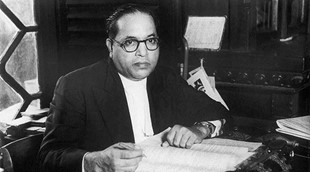
April 14 2022 is also being celebrated as Mahavir Jayanti, Baisakhi, Vaisakhi, Tamil New Year's Day, Cheiraoba, Biju Festival and Bohag Bihu in various parts of the country. Mahavir Jayanti is celebrated across the world by the Jain community in memory of the last spiritual teacher of Jainism, Vardhaman Mahavir. Bohag Bihu is observed in the month of Bohag (mid-April), the first month of the Assamese calendar, and marks the beginning of the Assamese New Year. Rongaali (‘Rong’ means joy in Assamese) is another name for this Bihu.
Sources:
Algorithm based Content
In News
The Parliamentary Standing Committee on Information and Technology has recently questioned Facebook officials over allegations that the algorithm used for its advertising platform unfairly promotes one political party in the country.
About the News
- Facebook was also questioned over claims of that hate content was being rewarded on the platform as well as the company’s lack of Indian language experts for quality check.
- In their defense, Facebook has informed the committee that its algorithm does not differentiate between political and non-political ads and the algorithm is designed to decide which advertisements do better than the others with no intervention by the company in this process.
- Facebook has long been criticized for allowing potentially dangerous, politically motivated movements to thrive, which has led to various incidents of real-world harm, the most high profile being the recent Capitol siege.
About the algorithm-driven News
There are basically two types of algorithmically generated news:
- Socially driven: These are news generated by an algorithm that takes into account users' personal online activity via social networking sites (SNS), as well as their ties to others in their network, to generate content for users.
- User-driven: These are feeds generated by algorithms based on the personal attributes and biases of the user and how he mediates content e.g., YouTube.
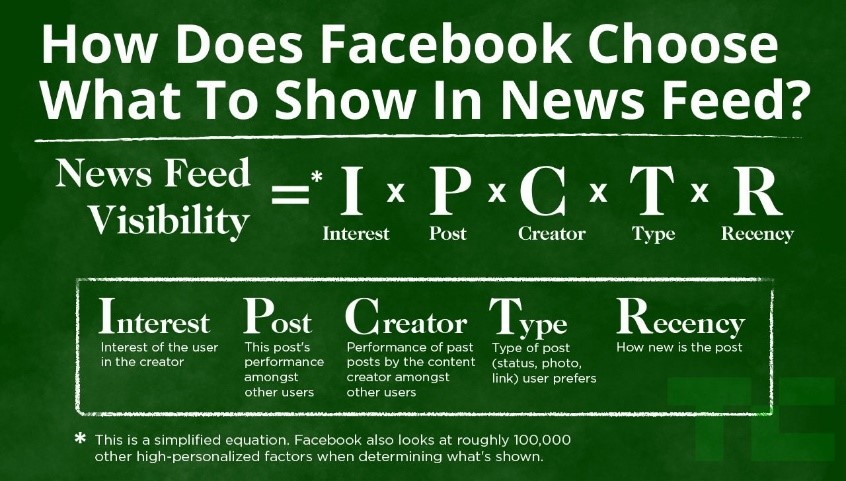

What are the major issues with algo-based content?
- Unfair advantage: According to a recent report in Al Jazeera, The Reporters’ Collective (TRC) and ad watch, Facebook’s advertising platform systematically undercut the political competition in India by giving an unfair advantage to one party over its competitors.
- Language experts: There are concerns that the algorithm of the Facebook seems to be aligned towards promoting and awarding hate content.
- Lack of language experts: With India being a very diversified country, it provides biggest user base for the company globally. Lack of enough language experts to deal with the content used in multiple languages is a big hindrance.
- Manipulates opinion: With approximately 71 billion users each month and over 100 billion searches per month respectively, companies like Facebook and google might even have a better idea of what a user’s online behaviour is like than he himself.
- Biased: Depending on the design of the algorithm and the nature and quality of the input data, algorithms can systematically disadvantage certain types of people in unintended ways. For instance, a health-care algorithm in the US underestimated the health risk of black patients who were equally as sick as their white counterparts.
- Algorithms can be used in the wrong context: Imposing a one-size-fits-all algorithmic decision in inherently complex environments or with insufficient human checks and balances can run a much higher risk of skewed, inaccurate or biased decisions.
- Possibility of design flaws: Failure to take into account relevant factors can damage the whole purpose of creation. For example, in Australia while administering Universal Credit, an individual working as gig was paid multiple times in one month due to overestimation of earnings by the algorithm.
- Generalization: In the online media economy, the artificial intelligence in algorithms are single-minded in achieving their profit-driven agendas by ensuring the maximum frequency of human interaction by getting the user to click on an advertisement. But AIs are not only economically single-minded, they are also statistically simple-minded.
Although marred with problems, AI-based or Algo-based inputs has certain advantages in politics?
- Personalised feed: AI can help to personalise the citizen experience. How each individual interacts with government is different, and AI can help in areas like answering peoples’ questions, personalising recommendations and tailoring services to users’ needs.
- Better monitoring: Data can be optimised to enable government to monitor services in real time. Systems can be developed so they track data and analyse it instantly, avoiding lags, inaccuracies and inefficiencies.
- Better classification: AI can help to classify cases more effectively. Many government services require placing events, citizens or information into the right category, such as which patient should see a doctor most urgently or to decide who is entitled to government support.
- Better predictions: Machine-learning algorithms can be particularly useful for making predictions and understanding trends and future behaviours. The combination of constantly advancing computer power and large amounts of data is able to do a much better job than human experts, and algorithms allow it to be done more efficiently, quickly and cheaply, and on a bigger scale.
- Study of complex systems: Government programmes and departments can be complex and convoluted. It is not always clear from the outset what all the potential consequences of a policy programme are. New technology can help study the effects of complex systems over time and even test policies before implementing them fully to gain more insight into their outcomes.

So, how can this technology be put to better use?
- Regulation: Government should adopt frameworks to incentivize ethical algorithms besides updating and connecting relevant laws and regulations to the digital world. In this regard, U.K. data protection law can be a role model.
- More R&D: Steps should be taken for research in the process of checking algorithmic bias, identifying algorithmic requirements and how to build compliant algorithms, and then enforcing those requirements.
- Improving compliance: Governments can use verification, audit, certification, and accreditation tools for risk, impact assessments, audits, and ongoing testing of algo-based contents.
- Making understandable: Agencies shall ensure that the operations and outcomes of their AI applications are sufficiently understandable by subject matter experts, users, and others, as appropriate.
- Responsible and traceable: Companies should ensure that human roles and responsibilities are clearly defined, understood, and appropriately assigned for the design, development, acquisition, and use of AI. Also, the design, development and use of AI purpose with relevant inputs and outputs of particular should be well documented and traceable, as appropriate and to the extent practicable.
- Monitoring: Government in concurrence with companies shall ensure that their AI applications are regularly tested against these Principles.
- Transparent: Companies shall be transparent in disclosing relevant information regarding their use of AI to appropriate stakeholders, including the government and the public.
Way Forward
If used correctly, algorithms are valuable tools that can have huge benefits for policymaking and public-service delivery. Resources are limited, and governments shouldn’t deprive citizens of the benefits algorithms can provide out of fear of getting it wrong. Instead, there is need to take progressive efforts in making judicious use of them, and putting in place adequate mechanisms for transparency, accountability and challenge. In this way, governments can rebuild public confidence and get past the dreaded mutant algorithm for good.
Question: Critically analyze the Algorithm based content’s role in the political setup.
Source:
- Parliamentary panel grills Facebook on ‘politically motivated’ algorithm:
- My social media feeds look different from yours and it's driving political polarization:
- How Facebook Algorithms Can Fight Over Your Feed:
- Exploring the effects of algorithm-driven news sources on political behavior and polarization:
- US Government finally steps in to regulate AI algorithms:
- Should the government play a role in reducing algorithmic bias?:
- How Artificial Intelligence (AI) can be used in Politics & Government?:
- How Facebook Algorithms Can Fight Over Your Feed:
- Government by Algorithm: The Myths, Challenges and Opportunities:
- The political effects of algorithms: a look at Facebook and Google:
Airy Crater
This is image of the Airy Crater, originally defined zero longitude for Mars. The image posted by NASA is a new image of a Mars crater. NASA revealed that the larger crater that sits within this crater, called the Airy Crater, originally defined zero longitude for Mars. This crater, called Airy-0 (zero) was selected because it did not need to adjust existing maps. The image was captured by the High-Resolution Imaging Science Experiment (HiRISE), on the Mars Reconnaissance Orbiter. 0° longitude on Mars is the Greenwich Observatory equivalent on the Red Planet. Greenwich Observatory marks Earth’s Prime Meridian, which is a north-south line that defines where east meets west and is used as the zero reference line for astronomical observations.

Source:
IPR in Songs
- Context: The Madras High Court had admitted a plea from composer and lyricist Ilayaraja, challenging a single-bench order related to his music.
- The order had permanently prevented him from asserting his copyright over his own musical work and master recordings for 30 films of the 1980s.
- A song usually comprises three elements – lyrics, tune and voice.
- According to the Copyright Act, 1957 (amended in 2012), there is a clear line between the owners and the authors of copyright.
- The Act gives the right of royalty to lyricists and composers if the song plays outside of the cinema halls.
- According to the provisions of the Act,
- A composer of musical work is an author;
- A lyricist is an author in relation to literary work (lyrics) and
- The producer in relation to sound recording is an author
- If the song is a part of a film and is going to be played as is, then the producer will be the owner of the song. The rule is the same if it’s an album owned by a recording label.
- Also, because a song has three different elements, all three can be registered separately under literary work, musical work and a performer’s rights.
- The song as a whole (the master sound recording) will still be with the producer (music label or film producer).

Source:
- Ilayaraja and his court battles explained: who owns the rights to a film song?
- Ilayaraja Has Exclusive Rights Over His Compositions, Rules Madras HC
Image source:
Helina
- Context: India has successfully flight-tested Helina, in Pokhran
- Helina is an anti-tank guided missile (ATGM) developed by Defence Research and Development Laboratory (DRDL), Hyderabad under the Missiles and Strategic Systems (MSS) cluster of the DRDO.
- It is one of the most advanced Anti-Tank weapons in the world with a maximum range of 7 kms and has been designed and developed for integration on weaponized version of the Advanced Light Helicopter (ALH).
- The missile system has all-weather, day and night capability and can defeat battle tanks with conventional armour as well as explosive reactive armour.
- It has been developed for integration with choppers in both the Army and the Air Force. The Air Force version of Helina is sometimes referred to as
- Helina can engage targets both in direct hit mode as well as top attack mode.
- In the top attack mode, the missile is required to climb sharply after launch and travel at a certain altitude and then plunge on the top of the target while in the direct hit mode, the missile travels at a lower altitude, directly striking the target.
- The missile is guided by an Infrared Imaging Seeker (IIR) operating in the ‘lock on before launch’ mode.

Source:
- India carries out successful flight-test of anti-tank guided missile Helina in Pokhran
- India carries out successful flight-test of Anti-Tank Guided Missile Helina in Pokhran
Image source:
Ancient Megalithic Jars
- Context: The recent discovery of a number of megalithic stone jars in Assam’s Dima Hasao district has indicated possible links between India’s Northeast and Southeast Asia.
- The jars of Assam were first sighted in 1929 by British civil servants James Philip Mills and John Henry Hutton.
- They recorded presence of jars in six sites in Dima Hasao namely Derebore (now Hojai Dobongling), Kobak, Kartong, Molongpa (now Melangpeuram), Ndunglo and Bolasan (now Nuchubunglo).
- These jars are a “unique archaeological phenomenon” and the documented jars were of significant shapes (bulbous top with conical end; biconcial; cylindrical) on spurs, hill slopes and ridge lines across various sites.
- The links of these jars could be drawn with the stone jars found in Laos and Indonesia as there are typological and morphological similarities between them.
- As there is no such discovery anywhere else in India, apart from the northeast, this indicates that once upon a time a group of people having similar kind of cultural practice occupied the same geography between Laos and Northeast India.
- They seem to date back to the second millennium BC and is believed to have been used in mortuary as ancestral bone repository.

Source:
- Explained: How ancient megalithic jars connect Assam with Laos and Indonesia
- Megalithic Jar Phenomenon linked Northeast with South East Asia long before
Image source:
Parboiled rice
- Context: The Union Ministry of Consumer Affairs, Food and Public Distribution recently said that it has decided to not accept parboiled rice in the Central pool for kharif marketing season (KMS) 2021-22 from any state due to high stock level.
- Parboiled rice also called converted riceand easy-cook rice is rice that has been partially boiled in the husk.
- The three basic steps of parboiling include soaking, steaming and drying.
- These steps make the rice easier to process by hand, while also boosting its nutritional profile, changing its texture, and making it more resistant to weevils.
- Parboiled rice is also a source of iron and calcium.
- Compared to white rice, parboiled rice has fewer calories and carbohydrates, more fiber and protein that makes it a healthier alternative to traditional white rice.
- It improves Gut Health and also reduces diabetes symptoms.

Source:
- Demand for parboiled rice low, can’t waste money, says Centre
- Demand For Parboiled Rice Low, Can’t Waste Money, Says Centre
Image source:
Prescriptions for a cleaner, healthier, and stronger economy: Hindustan Times
Essence: Greenhouse Gas emissions are on an upward trajectory, set to warm the planet by about 3°C by 2100. It will expose over a billion people to heat stress, water stress, and desertification. The poorest people with the smallest carbon footprint will be the most vulnerable to climate change. Thankfully, the IPCC (Intergovernmental Panel on Climate Change) report which shared this grim projection also came up with some positive developments and constructive suggestions.
The drastic drop in the cost of renewable energy over the last decade, be it solar or wind, is a big source of optimism. The report also suggests the need to decarbonize industrial process emission by adopting a circular economy approach. The need for reimagining city planning with a focus on integrating spatial planning and transit-oriented development to reduce urban energy use has also been stressed.
India needs to find source of capital investment to implement these suggestions.
Why should you read this article?
- To know predictions by IPCC report.
- To understand recommendations by IPCC report to deal with climate change.
Source:
An invisible groundwater crisis needs greater visibility: Livemint
Essence: The editorial speaks about the impending groundwater crisis which is based on high groundwater extraction and less groundwater recharge culture. The crisis presently involves as much as quarter of world’s population. Overdependence on groundwater and less availability would lead to crop production decline, leading to “worst water crisis in India”, as said by NITI aayog.
Effective methods for groundwater management through Jal Shakti Abhiyan, handling demand side of water through Atal Bhujal Mission and providing potable water through Jal Jeevan Mission would be the way forward. Making people aware of WASH principle along with providing water ATMs as last mile connectivity with private participation is the key to water management.
Why should you read this article?
- To know the level of ground water crisis in India
- To understand the initiatives by the government to conserve ground water in India.
Source:
The key phrase is focus on the foetus for the future: The Hindu
Essence: The editorial highlights the issue of non-communicable diseases (NCDs), which spreads like a silent pandemic, with focus on diabetes. These NCDs could be diabetes, obesity, hypertension, heart disease, etc and their numbers in humans are only increasing with time. Some reasons for such rise are ageing population, urbanization, nutrition and lifestyle changes, genetic predisposition and pregnancy-related diabetes.
Presently, there could be around a billion people with diabetes and a number of others in pre-diabetes stage. To avoid such spread, the pregnant mother needs to control the blood sugar through tests and insulin injection in the body. This would ensure that the foetus doesn’t have a tendency to develop the ailment as they grow up as an individual, thus avoiding transgenerational effects. To spread this awareness, the government as initiated the National Gestational Diabetes Mellitus Awareness Day in India.
Why should you read this article?
- To know about the various non communicable diseases.
- To understand the effect of diabetes and especially pregnancy related diabetes on health of the foetus.
Source:
Helping Amputees Walk Comfortably
Background
Researchers at IIT-Madras have launched India’s first indigenous Polycentric Prosthetic Knee, which aims to improve the quality of life for thousands of above-knee amputees.
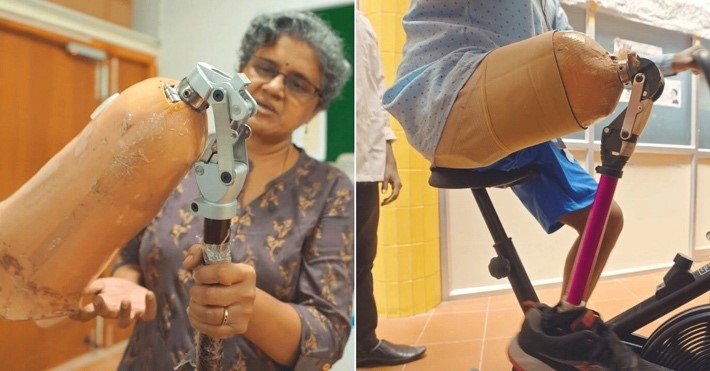
About the indigenous Polycentric Prosthetic Knee
- On 8 April 2022, researchers at the Indian Institute of Technology Madras launched India’s first indigenously developed Polycentric Prosthetic Knee called ‘Kadam’ (meaning ‘step’ in Hindi).
- To improve the quality of life for thousands of above-knee amputees, this ‘Made-in-India’ polycentric knee for Above Knee Prosthesis was developed by the TTK Center for Rehabilitation Research and Device Development (R2D2) at IIT-Madras in association with the Society for Biomedical Technology (SBMT) and Mobility India.
- SBMT, which supported the development process, was set up under Defence Research and Development Organisation (DRDO) by former President Dr APJ Abdul Kalam to enable indigenous medical device development.
- Kadam has advantages over a hinge joint because of the multiple axes of rotation and is specifically optimized to provide the user greater control over the prosthesis while walking, and a maximum knee flexion of 160 degrees to make it easy to sit in cramped spaces like buses and autos. It is designed for durability with high strength stainless steel and aluminium alloy along with hard chrome plated EN8 pins and high fatigue life polymer bushings.
- What Kadam does is help above-knee amputees to walk with a comfortable gait. It’s not just merely about mobility, but also about improving the users’ quality of life through greater participation in their local communities, access to education, livelihood opportunities, etc.
Quote:
“Alone we can do so little, together we can do so much." -Helen Keller.
Source:
Share the article
Get Latest Updates on Offers, Event dates, and free Mentorship sessions.

Get in touch with our Expert Academic Counsellors 👋
FAQs
UPSC Daily Current Affairs focuses on learning current events on a daily basis. An aspirant needs to study regular and updated information about current events, news, and relevant topics that are important for UPSC aspirants. It covers national and international affairs, government policies, socio-economic issues, science and technology advancements, and more.
UPSC Daily Current Affairs provides aspirants with a concise and comprehensive overview of the latest happenings and developments across various fields. It helps aspirants stay updated with current affairs and provides them with valuable insights and analysis, which are essential for answering questions in the UPSC examinations. It enhances their knowledge, analytical skills, and ability to connect current affairs with the UPSC syllabus.
UPSC Daily Current Affairs covers a wide range of topics, including politics, economics, science and technology, environment, social issues, governance, international relations, and more. It offers news summaries, in-depth analyses, editorials, opinion pieces, and relevant study materials. It also provides practice questions and quizzes to help aspirants test their understanding of current affairs.
Edukemy's UPSC Daily Current Affairs can be accessed through:
- UPSC Daily Current Affairs can be accessed through Current Affairs tab at the top of the Main Page of Edukemy.
- Edukemy Mobile app: The Daily Current Affairs can also be access through Edukemy Mobile App.
- Social media: Follow Edukemy’s official social media accounts or pages that provide UPSC Daily Current Affairs updates, including Facebook, Twitter, or Telegram channels.

